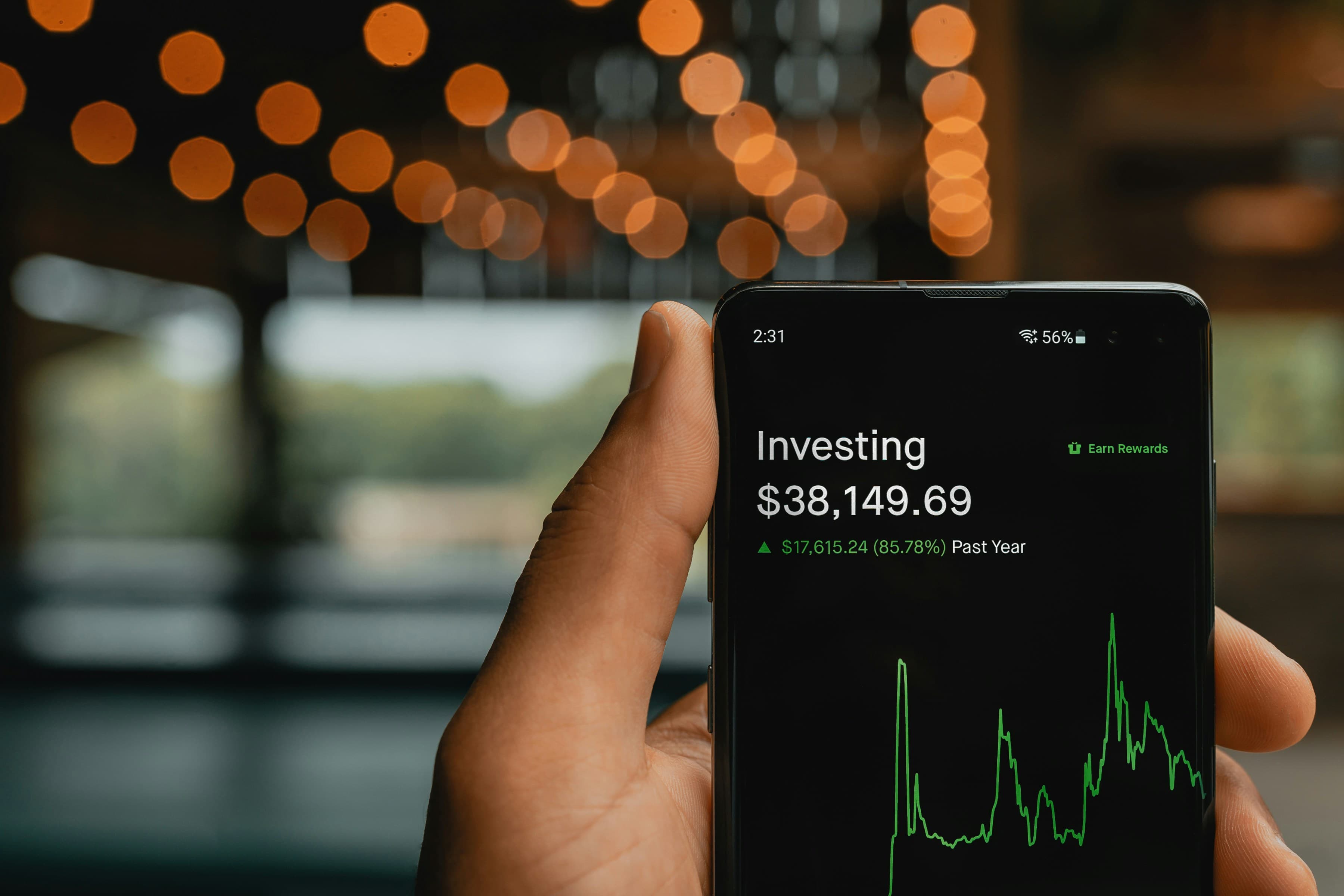Beyond Being Rich: My Approach to Funded Contentment

Money was a constant source of conflict in my house growing up. My dad made a good living, and my mom was skilled at spending it, but their relationship was strained for many reasons. Money just became the language they used for conflict and control. After they divorced, the arguments over alimony and child support dragged on for years.
When people ask what I learned about money from my parents, the short answer is nothing. The longer, more honest answer is that I learned money could be a tool—both for buying things and for hurting people. It would be easy to draw a straight line from that painful childhood to my career in financial wellness, but that’s not really the story. My journey into the world of finance was accidental. I left academia in 2000, joined Morningstar because I was broke, wanted to marry my wife, Tracy, and didn't want the transient life of a professor. They hired people like me—oddballs who could write and found markets interesting.
My approach to didn't come from a Freudian need to fix my past. It’s an adaptive strategy that has evolved as my life has, shaped by the people I love and the ideas I hold dear. My entire philosophy around financial life—earning, spending, saving, giving—has settled on a concept I call “funded contentment.” For me, true wealth isn't about being rich or just having more; it's the ability to underwrite a life that holds deep meaning for me.
The “Why” Behind My Financial Plan
Funded contentment is the mental model I use for the life I want for myself, my wife, and our three kids. I often joke that I should write a book called “Sandwiched,” about being a parent to growing children while also being the child of aging parents. Handling one is tough; both at the same time is exhausting and expensive.
Our goals are pretty straightforward. First, we want a daily life of convenience with minimal frustration, which allows us to afford a meaningful existence filled with strong relationships, great experiences like travel, and a sense that we’re contributing to something bigger than ourselves.
Then you have the two big ones: college and retirement. If our three kids each attend a four-year private university, that’s about a million-dollar expense. Retirement is more of a guess, even with all the calculators and metrics, so we’re simply maxing out our 401(k)s and IRAs. A third goal is ensuring our kids never have to shoulder the financial burden of caring for us. Helping support my own mom has its difficulties, and I’ve promised myself I won’t put my children in that position.
Finally, there’s my sister, Cheryl. She has a genetic condition called Fragile X and is developmentally disabled, meaning she will always need my support. Knowing I'll be responsible for her for the rest of her life is stressful, but it’s also a profound source of contentment to know I'm on track to have the resources to do so. My dad has supported her for a long time, but eventually, it will all fall to me.
My Four Buckets for Investing Money
Before diving into my investment strategy, a quick note on lifestyle. The most critical parts of a healthy financial life aren't about picking stocks. It starts with earning, then spending, saving, and borrowing. I’ve been fortunate to work near the hedge fund industry and earn well. Tracy and I have always been disciplined spenders, not because we stick to a rigid budget, but because we simply don't desire the big-ticket items that attract others. Our financial foundation is a high savings rate and a strong dislike for debt. We paid off our mortgage years ago. I know I could have earned more by investing that money instead, but I don’t care. The peace of mind from having no mortgage is priceless.
With that foundation in place, here’s how I approach investing, broken down into four buckets.
1. Free Beta: The Core of Our Portfolio
After two decades of seeing the investment world from the inside, my conclusion is simple: most of us should just own low-cost stock and bond index funds. This is a core concept for anyone interested in . Most of our college and retirement funds are in the Vanguard Total World Stock ETF (VT). It costs next to nothing and gives us globally diversified equity exposure. If the world’s stock market does well, so will we. I have no interest in trying to outsmart the market by tilting toward specific regions or sectors. The odds are against me, and I’d rather spend my time reading a book.
2. Juicy Cash: The Ultimate Hedge
On paper, my biggest financial mistake has been holding too much cash—sometimes over 25% of our net worth. The opportunity cost during the last bull market is painful to think about. But my career has a high correlation to the market; my human capital and financial capital are tied together. A crisis like 2008 puts my family’s stability at risk. Cash is my hedge against that. It provides a safety net that has always helped me sleep well, knowing my family would be fine for years if my career took a hit. This kind of thinking is crucial in or for anyone with a less predictable income. I also view this cash as providing the flexibility to jump on unexpected opportunities. To get a better return, I invest a portion of it in a small private fund that buys short-term, odd-lot municipal bonds, offering a much better yield than a savings account.
3. Enterprise Income: Building a Side Income Business
This bucket is all about : creating income streams that don’t require my active time. My wife and I own a couple of real estate properties that generate recurring rent each month. This is a classic example of creating a through . My goal is to eventually have enough rock-steady income from these types of investments to more than cover our daily expenses. Beyond , we've also invested in shorter-term private loans, which are some of the more interesting . For instance, I was part of a group that loaned money to a quarry owner who needed new equipment but couldn't get traditional bank financing. These opportunities come from my network, showing how social capital can become financial capital. The goal is simple: consistently.
4. Long-Term Options: The Lottery Tickets
This last bucket is for my angel and venture capital investments. These are high-risk bets on small companies I believe in. Some have already paid off, like a craft whiskey maker that was acquired. Others have gone to zero. Most are still in the game. I invested $25,000 in a friend’s corporate meditation company because I wanted to support her. She’s doing great, but even if the business fails, I’ll be glad I backed my friend. These are lottery tickets; if a few of them hit, the returns could be huge, but it would be foolish to base my financial plan on that hope. It's a speculative approach to , and I treat it as such.
In the end, money can be a source of chaos or a tool for control. My experience has taught me that total control is an illusion and that playing the odds is the best we can do. My framework for funded contentment isn't about hitting a specific number; it's an ongoing journey to afford the life that truly matters.








